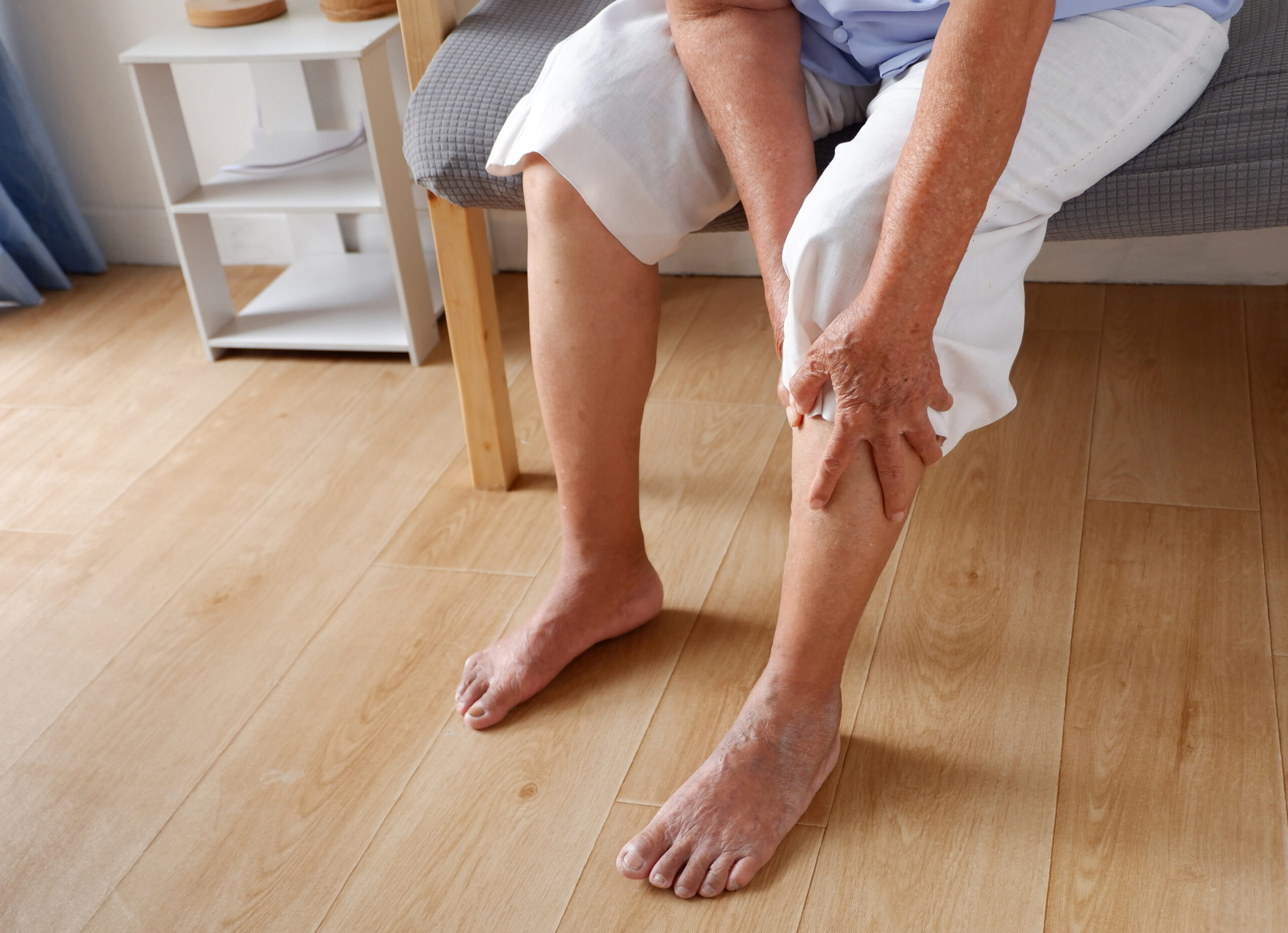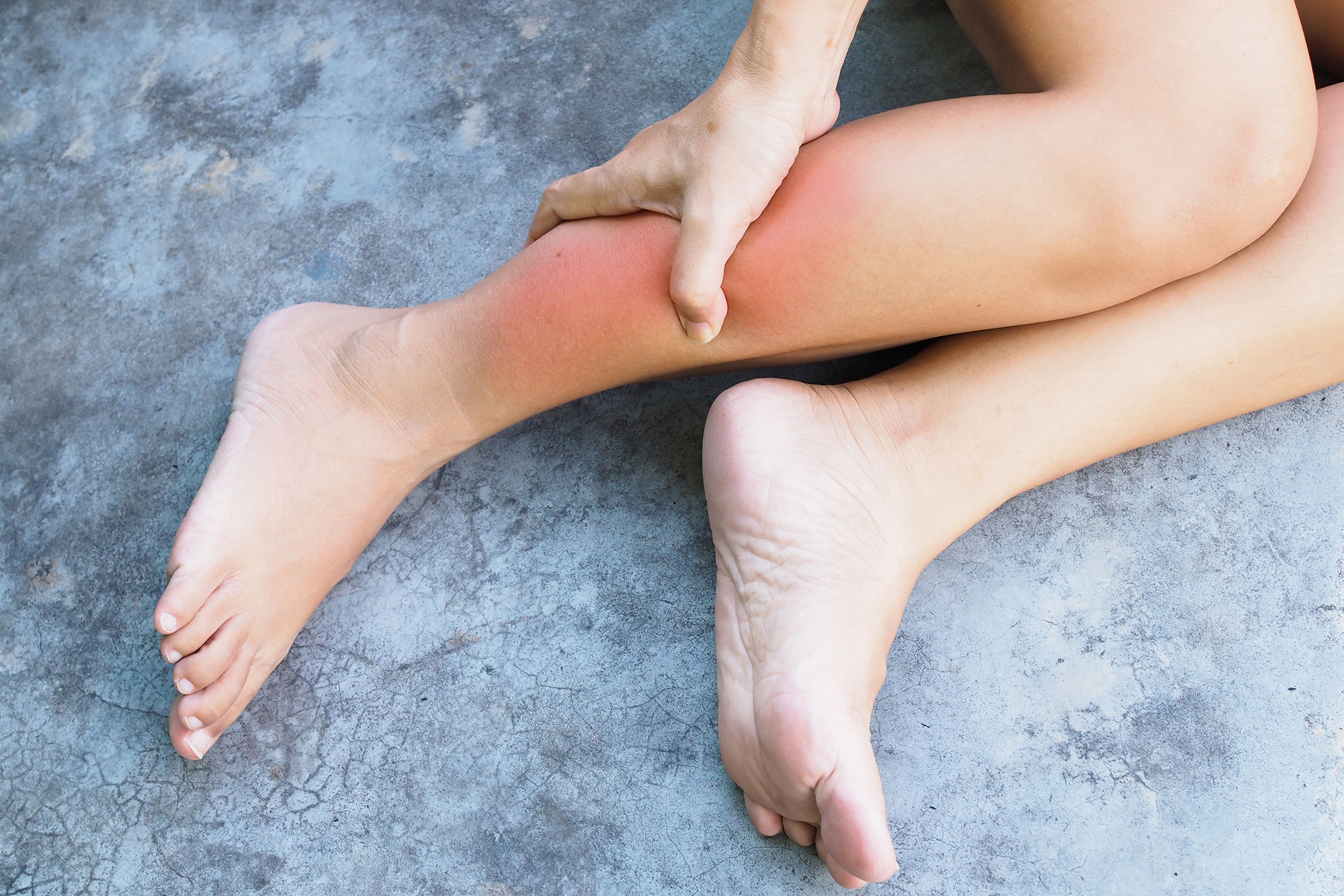Swollen Leg Treatment: Start Tackling the Pain Today
Once you know what’s causing your swollen legs and painful symptoms, you can control your condition and live a healthier life through swollen leg treatment. Developing a treatment plan with your pain management specialist or doctor is crucial.
What’s the amount of time you spend standing versus sitting? Do you often feel tired, swollen, or heavy in your legs? Do you have difficulty walking or climbing stairs? It could be a blood flow and circulation issue that’s causing the problem. A comprehensive lifestyle and body treatment for your legs may be the answer to your pain and discomfort.
First, it’s important to determine what is causing your pain. Blood vein damage — specifically in your vein valves — cannot be reversed with treatment. However, you can have a much better quality of life if you work on reversing your symptoms with the right help from a pain management specialist. Chronic venous insufficiency cannot be cured, but with proper changes and treatment, you can manage your condition reasonably and safely.
Getting to the Point of Swollen Leg Treatment
Symptoms of chronic venous insufficiency include swollen legs and heavy legs syndrome, both of which require swollen leg treatment. It’s essential to have the right plan in place.
Blood flows back to the heart through your veins when it’s pumped through your body, and it’s pumped upward against gravity. Despite the elasticity of veins and muscles surrounding them, the valves inside your veins prevent blood from flowing backward, serving as a crucial tool in the body’s circulatory system. Your body circulates blood back to your heart through these vascular valves in both legs.
As vessels stretch, those valves cannot work as efficiently. Blood and waste products can pool in your legs, making them heavy, tired, or swollen. The valves in your veins may not function properly if they’ve lost elasticity over time.
Several problems, either individually or altogether, can cause chronic venous insufficiency, swollen legs, and heavy legs. Among them are heredity, aging, being a woman, pregnancy, peripheral arterial disease (PAD), overtraining syndrome (OTS), lumbar spinal stenosis, excess weight, sitting or standing for long periods of time, smoking, varicose veins, or restless legs. A pain management treatment plan can be helpful in this situation.
Symptoms and Pain: Swollen Leg Treatment
Despite the unpleasant symptoms caused by venous insufficiency, most of them are mild and can be controlled through a swollen leg treatment plan. The pain or muscle cramps may be accompanied by heaviness, itching, prickling, or tingling, as well as swelling. It’s possible for symptoms to worsen in hot weather.
Patients who have an insufficient venous system may develop varicose veins or damaged veins on the surface of their skin. Blood clots can form in areas where blood accumulates in some individuals, causing skin infections.

Capillaries in your legs will burst if you don’t treat the pressure and swelling. Your skin may turn reddish-brown, particularly around your ankles. Ulcers and swelling can result from this. Ulcers like these are difficult to heal. Further complications can also occur when they become infected.
It’s always important to get a medical evaluation for swollen legs. The first time a patient consults a pain management specialist, health professional, or doctor is the beginning of a great start to a healthier you — so you can find freedom from the pain.
Swollen Leg Treatment: Reducing Risk and Lifestyle Choices
Through implementing a calculated swollen leg treatment plan, aided by your pain management specialist and daily lifestyle choices at home, you can relieve pain and discomfort:
- Regularly get massages.
- Take cold baths instead of hot ones. Your veins dilate when you’re hot, slowing down blood flow.
- High heels and tight clothing should be avoided.
- Avoid smoking.
- If you’re standing, don’t stay in one position for too long. When you move your legs, your blood flow improves.
- Don’t sit still — and exercise regularly. Losing weight, lowering cholesterol, and improving circulation are all benefits of being active. Don’t overdo it with your workout routine. However, the weight of your body will continually put more pressure on the veins in your legs if you don’t get in better shape.
- Eat a healthy diet. In addition to varicose veins, obesity can cause diabetes and fatty deposits in the arteries.
- Keeping your legs toned promotes blood flow. The best way to do this is to exercise through walking every day.
- Elevating your legs can help. Reducing gravity’s impact eases blood flow directed back to the heart. It’s also helpful to massage the area at the same time.
- Make sure your legs are not crossed when you sit.
- Make sure you get enough sleep.
- Make sure you wear compression socks or stockings. The pressure of these socks promotes blood flow to the heart.
Swollen legs are often difficult to treat with self-care at home if you’re not checking in with a pain management specialist. To successfully treat chronic venous insufficiency, you should consult a health professional.
Get on a Plan: Swollen Leg Treatment
Heavy legs syndrome can affect your quality of life if you don’t seek out the right swollen leg treatment. The news isn’t all bad, though. You can get stronger in the face of this health problem. You should consult a pain management specialist or doctor if symptoms persist over the long term.
It’s our goal to get you moving on your pain-free journey by reviewing your pain and symptoms, applying the right treatment, reviewing your medical history, and performing any necessary tests. By showing how blood flows through your veins, an ultrasound and other tests can diagnose your swollen legs. You’ll learn everything you need to know about vessel ablation, massage therapy, acupuncture, intravenous hydration, and so much more.
Wellness and Pain Can Help
A range of options are available at Wellness and Pain for swollen leg treatment. Here, we offer conservative treatments, routine visits, and minimally invasive quick-recovery procedures. We can keep you free of problems by providing lifestyle education, home care advice, and a comprehensive plan to help you avoid and manage issues, quickly relieving the conditions inhibiting your life by using cutting-edge techniques.
We personalize patient care plans based on each patient’s condition and unique circumstances to relieve pain, improve mobility and mental space, and improve your overall health.
Treatments for Heavy, Tired, Swollen Legs
Vein Ablation
Vein Ablation
Vessel ablation – formally known as radiofrequency ablation (RFA) – is a minimally invasive and ...
Massage Therapy
Massage Therapy
Pain including Muscle Tension, Back and Shoulder pain, Repetitive stress injuries, Headaches, Neck p...
Acupuncture Therapy
Acupuncture Therapy
A traditional Chinese medicine technique that is used to stimulate energy flow and promote healing. ...
Chiropractic Services
Chiropractic Services
Flexion-distraction therapy is a specific gentle technique performed on a segmented table that moves...
IV Hydration
IV Hydration
...
Schedule Your Consultation Today











